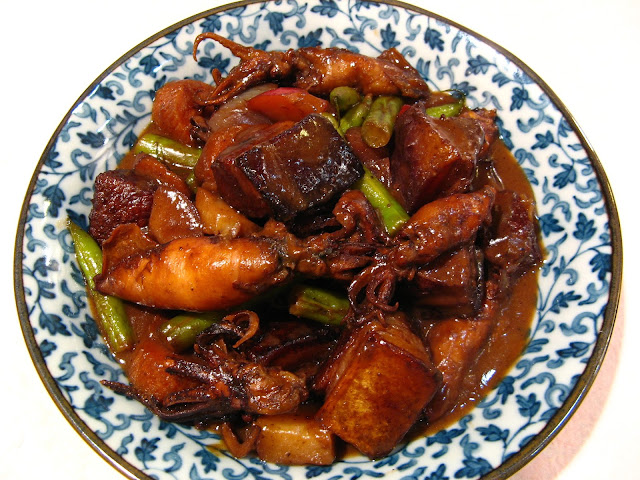Happy Lunar New Year! Sea cucumber is an ocean sea slug treasured
for its texture and (supposed) medicinal properties, and is a special occasion
ingredient. White sea cucumber is prized over the black sea cucumber, and I
used it in this first recipe for Lunar New Year’s. Sea cucumber (either color)
is itself tasteless, so the taste of the dish comes from the other ingredients.
It is available either dried or frozen at your local Asian herb store (dried
version) or Asian market (frozen). So there is some preparation work that must
be done before sea cucumber can be used in a dish. I prefer the frozen version
since all you have to do is thaw it the day before using it.
There are really two cooking techniques needed to make this
dish: stir frying and braising. The chicken, shrimp, and snow peas need to be
stir fried before the coin mushrooms and sea cucumber are braised in the sauce and
mushroom rehydration liquid to generate the flavor for the dish. This dish is
made with a lot of sauce, which is provided by the mushroom rehydration liquid,
adding the necessary volume for this dish. Since this is a festive dish, abalone
sauce and brandy is used to make the sauce, but you can use oyster sauce and Shaoxing
wine (which I normally use to make sauces).
Meat and seafood is a classic combination in Chinese dishes.
Usually the meat part of the combination is pork and you’ll find may recipes
using various parts of the pig with sea cucumber (I want to try making pig’s
feet and sea cucumber!). Chicken as the meat with sea cucumber is unusual, but
it certainly is tasty.
Enjoy!





































